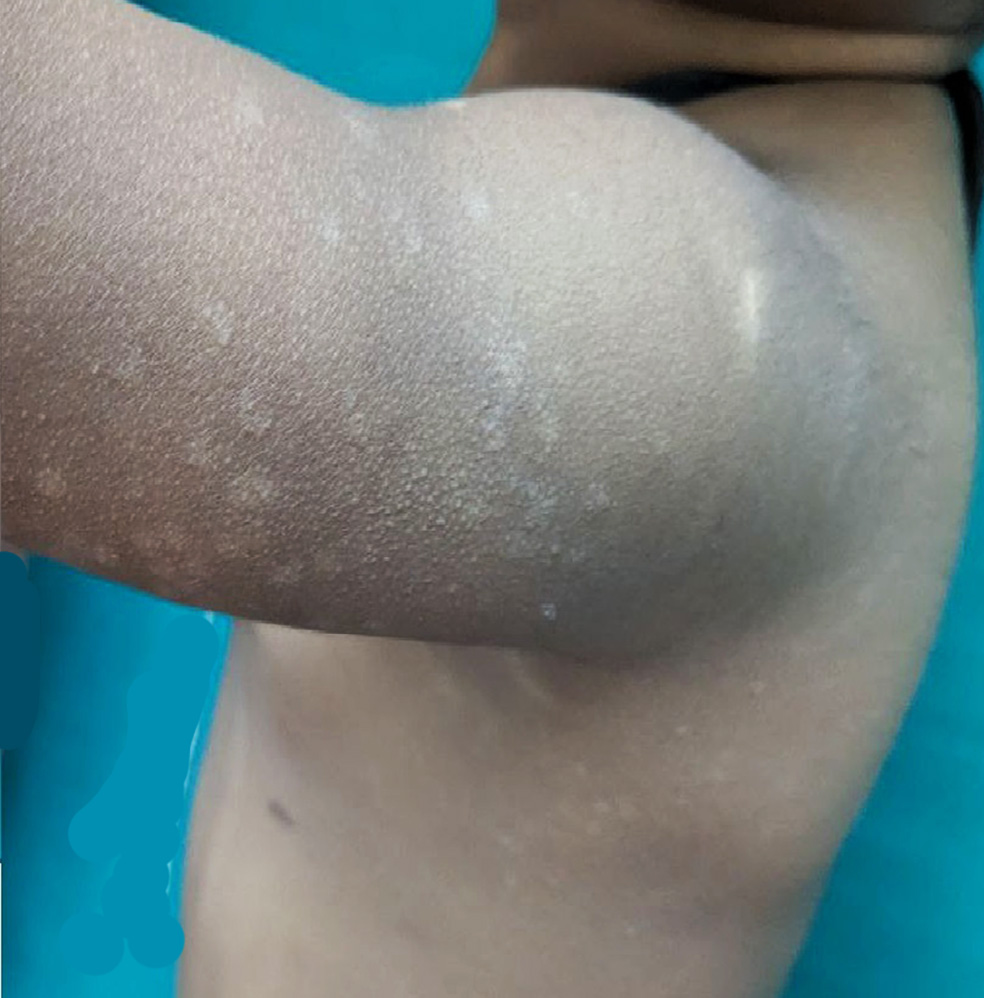Use of 365 nm fluorescence dermoscopy for diagnosis of pityriasis versicolor in a toddler.

Downloads
DOI:
https://doi.org/10.26326/2281-9649.35.1.2737How to Cite
Patil S., Dundi V.K., Bahuguna A. 2025. Use of 365 nm fluorescence dermoscopy for diagnosis of pityriasis versicolor in a toddler. Eur. J. Pediat. Dermatol. 35 (1):49-51. 10.26326/2281-9649.35.1.2737.
pp. 49-51
Abstract
Pityriasis versicolor, a superficial fungal infection caused by Malassezia species, is not uncommon in children. A 15-month-old boy with hypopigmented macules on the face, trunk, and upper and lower extremities was reported. Diagnosis was facilitated by 365-nm fluorescence dermoscopy, which revealed a characteristic yellow-green fluorescence, allowing rapid confirmation of the diagnosis. This case highlights the utility of fluorescence dermoscopy as a noninvasive diagnostic tool.
Keywords
pityriasis versicolor, dermoscopy, fluorescence, child
